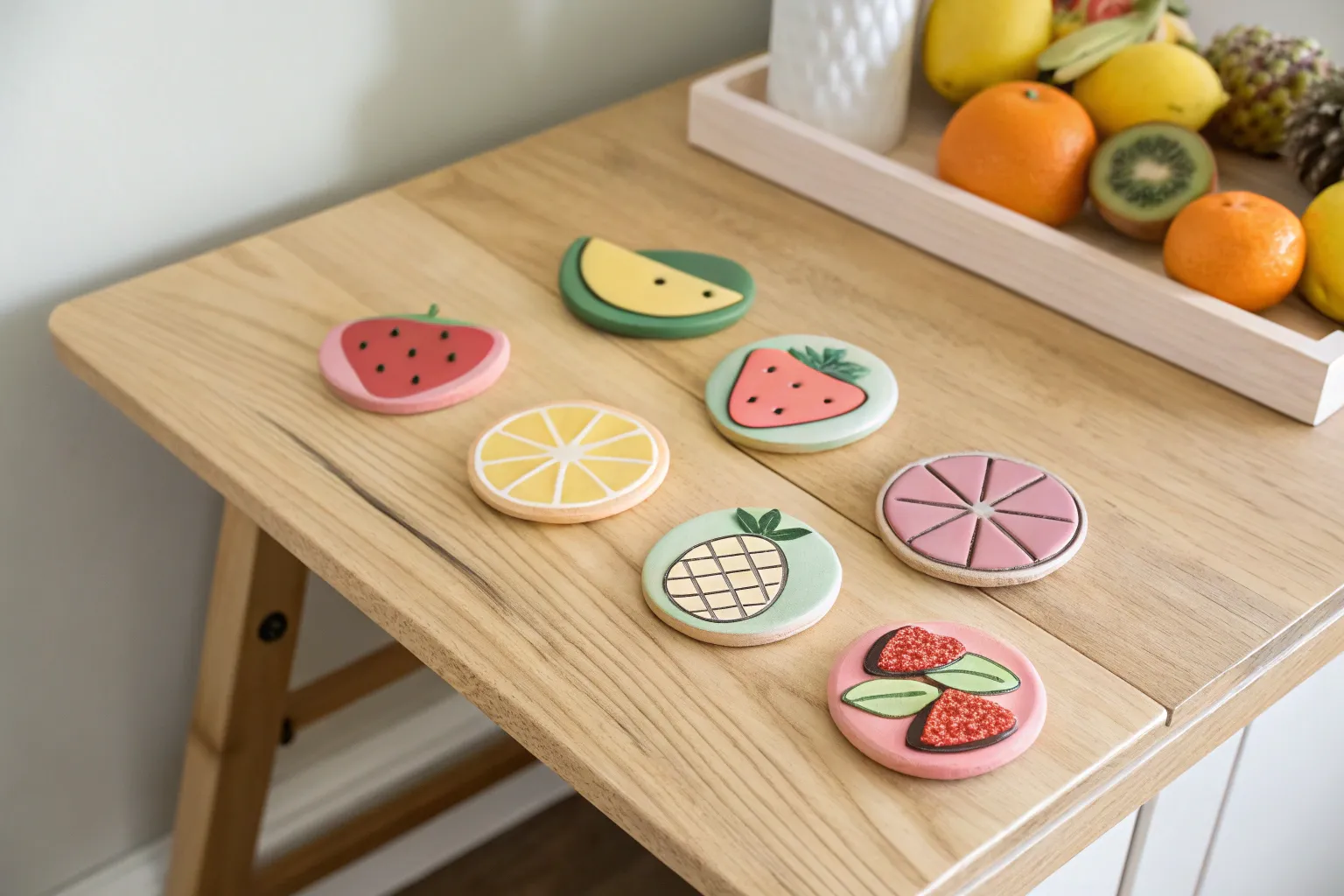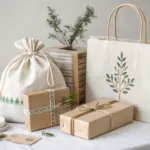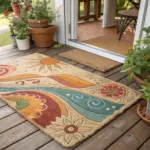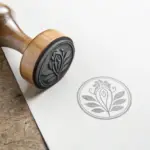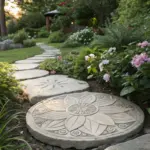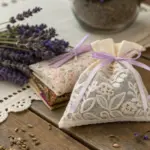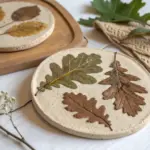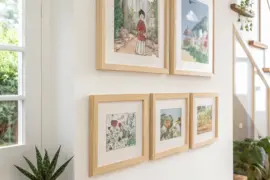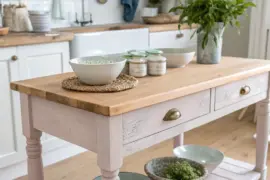Clay fruit magnets in soft pastel hues bring a refreshing combination of charm and subtlety to everyday life. They are simple to create yet elegant enough to feel intentional as design pieces.
Why Choose Pastel Fruit Magnets?
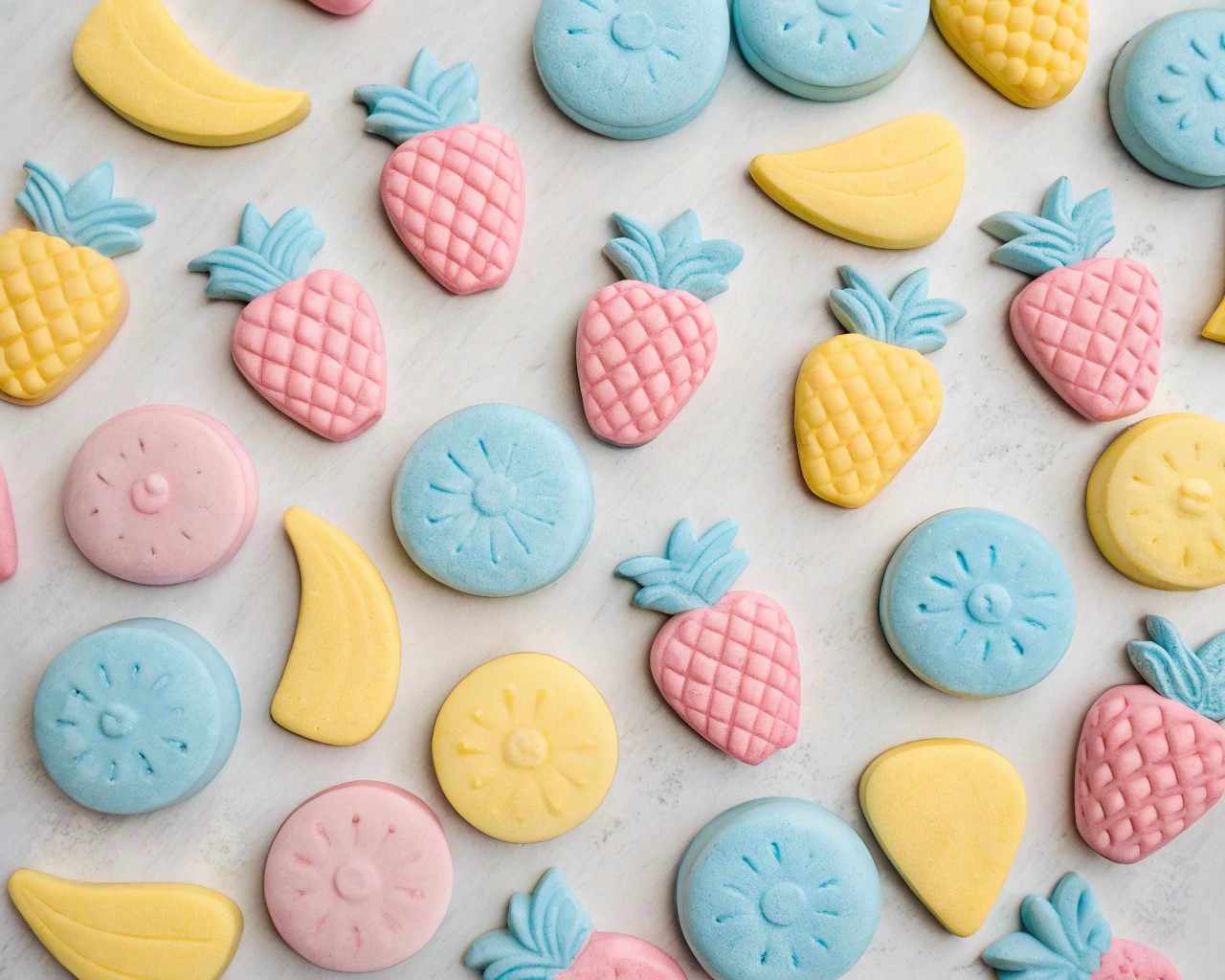
Fruit shapes are iconic—instantly recognizable, playful, and appealing across all ages. When crafted in pastel finishes, they shed their bold, primary associations and step into a more modern, design-friendly role.
Pastels create the effect of softness: pale peach, powder mint, butter yellow, and lavender offer serenity while still evoking cheer. These delicate tones also integrate effortlessly into contemporary interiors, where lighter kitchens and minimalist spaces often benefit from vibrant-yet-muted accessories.
From a functional perspective, magnets are objects you interact with daily. By transforming them into decorative sculptures, we give small, utilitarian tools the potential to enhance mood and décor.
Materials and Tools
Here’s what you’ll need at a glance:
- Clay Base: Air-dry clay or oven-bake polymer clay (white or neutral is best for clean pastel finishes).
- Pigments: Soft pastel chalk (ground into powder) or acrylic paints.
- Tools for Shaping: Rolling pin, dull knife, toothpicks, sculpting sticks, cookie cutters (optional for uniform forms).
- Finishing Supplies: Sandpaper (fine grit), matte sealer, soft brushes.
- Adhesives: Industrial-strength craft glue or epoxy.
- Magnets: Small but powerful neodymium magnets (thin, flat discs work best).
Tip: Keep all clay tools and surfaces clean—clay shows dust and fingerprints easily, which becomes noticeable once pastel pigment is applied.
Step-by-Step Instructions
1. Condition the Clay
Work your clay until smooth and pliable. For even results, roll it between your palms or gently press and fold until it becomes warm and easy to handle. This step minimizes internal stress in the clay, making cracks less likely later.
2. Shape Basic Fruit Forms
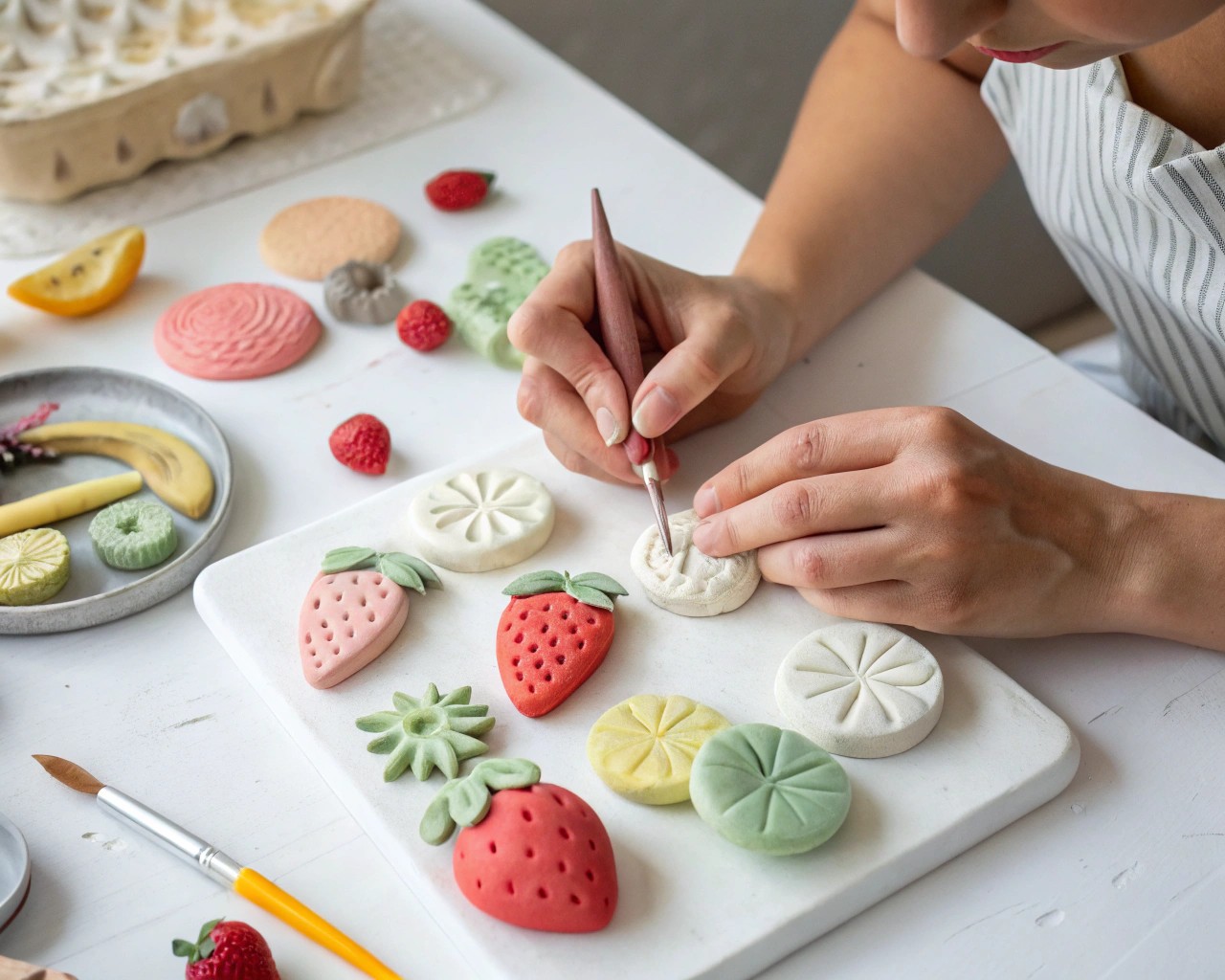
Think geometrically; most fruit can be simplified into rounded forms:
- A lemon becomes an elongated oval.
- An apple starts as a sphere with a soft, pressed indentation at the top.
- A pear is a teardrop with a wider base.
- A peach is a sphere with a delicately drawn crease.
- Cherries are small twin globes, optionally joined with a clay stem.
Keep edges softly rounded; this makes the pastel glow smoother once applied.
3. Add Refined Details
Rather than literal realism, aim for abstraction. A light nick where a stem would be, or a faint scored line along a lemon’s side, provides just enough suggestion without cluttering the form.
Personal insight: When I added too much surface texture in early attempts, the final painted magnets looked fussy instead of refined. A single clean gesture is often enough.
4. Dry or Bake
Depending on your clay type:
- Air-dry clay: Allow at least 24–48 hours; rotate shapes occasionally for even drying.
- Oven-bake polymer clay: Bake according to the manufacturer’s temperature (usually 265–275°F), typically for 15–30 minutes depending on size.
Ensure the underside is flat by pressing it lightly on a smooth surface before final curing. This guarantees strong adhesion for the magnet later.
5. Sand and Smooth
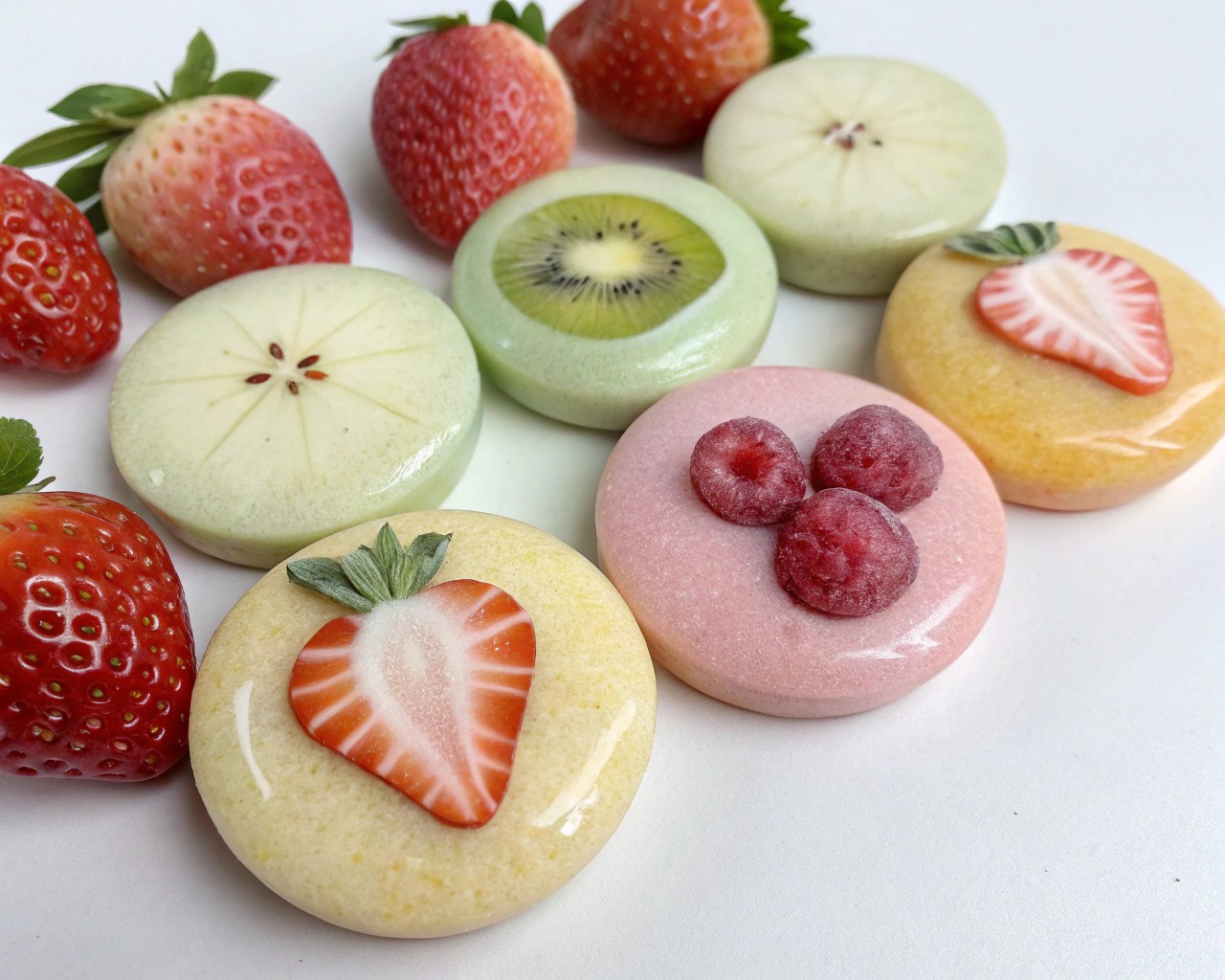
Once hardened, check for any rough edges. A light pass with fine-grit sandpaper creates a silky surface, which enhances paint absorption.
6. Apply Pastel Finishes
Two reliable methods:
Powder Tinting (before baking, if polymer clay)
– Shave chalk pastels into fine powder.
– Brush onto damp clay surface with a soft brush.
– Bake to set the pigment into the clay.
Acrylic Wash (after curing)
– Mix acrylic paint with plenty of white to achieve pastel tones.
– Apply in thin coats to preserve the smooth finish.
– Allow each layer to dry fully before the next to avoid streaking.
For variety, layer complementary tones—for example, a blush peach fruit with a faint mint “leaf.”
7. Seal and Protect
Use a matte sealer to fix color and prevent smudging. Multiple thin coats are better than one heavy coat, ensuring an even, velvety finish. Avoid glossy sprays, which can make pastels look plastic rather than soft.
8. Attach Magnets
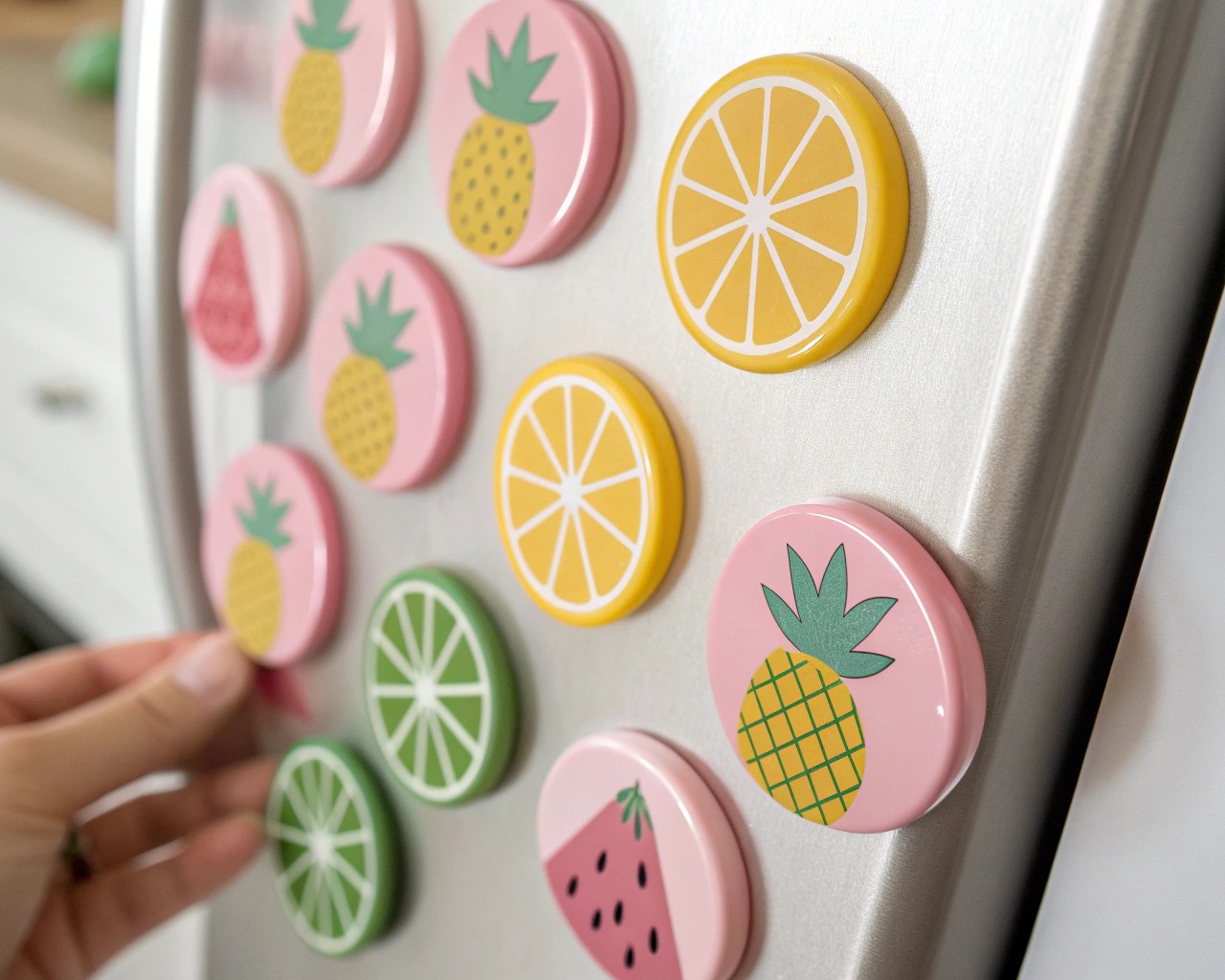
Glue magnets to the flat backs using an adhesive strong enough to hold through everyday use. Let cure completely before placing them on surfaces.
Design Variations and Inspiration
| Fruit Idea | Pastel Palette | Design Detail Suggestions |
|---|---|---|
| Lemon | Soft butter yellow + pale mint | Mini green leaf; tapered ends |
| Apple | Creamy muted green or blush pink | Brown dab for stem |
| Peach | Blush pink + ivory highlight | Gentle crease down side |
| Blueberry | Powder lavender-blue | Tiny smooth dimple on top |
| Cherries | Rose pink or faded coral | Pair on one magnet, linked by clay stem |
| Grapes (cluster) | Series of small lavender beads grouped together | Flat base for adhesion |
This variety allows one set of magnets to represent different moods—cheerful in spring, cozy in autumn, calm in winter.
Tips for Professional Results
- Scale for Balance: Keep fruit shapes to 1–2 inches; larger objects feel heavy on a fridge surface.
- Consistency in Series: If making a collection, repeat certain tones across fruit for cohesion.
- Layered Color Effects: Blend one pastel hue into another before sealing for subtle gradients.
- Magnet Strength: Always choose magnets rated to hold paper or notes, not just decorative strength.
- Display Consideration: Pastel tones stand out beautifully against stainless steel appliances and neutral walls.
Seasonal Palette Suggestions
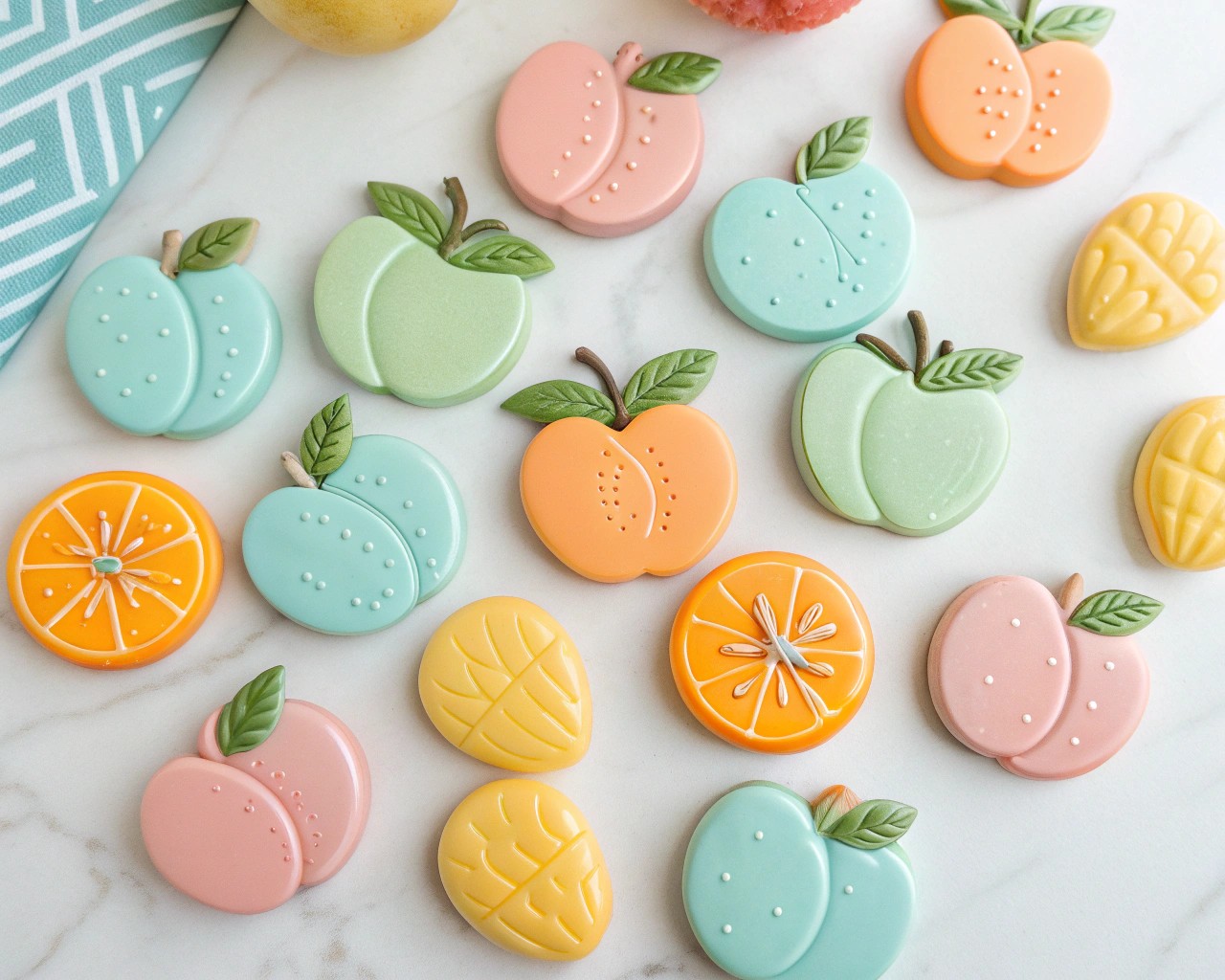
Rotating magnets like artwork keeps them fresh:
- Spring: Mint, soft lilac, blush peach
- Summer: Pale coral, butter yellow, minty lime
- Autumn: Warm clay-orange, dusty rose, sage green
- Winter: Frosted lavender, icy blue, creamy ivory
By tailoring pastel tones to seasons, you extend the life of your collection and create visual rhythm throughout the year.
Where They Shine Best
Pastel fruit magnets make kitchens more inviting, especially in homes with white cabinetry, open shelving, or stainless appliances. In an office, they soften the hard lines of filing cabinets or pinboards while keeping order. They’re also thoughtful, handmade gifts—personal, useful, and decorative.
Closing Thought
Crafting clay fruit magnets in pastel finishes blends utility with artistry. These small objects gently brighten daily routines while showcasing your creative hand. Personally, I find that even a small cluster of them has a transformative effect—the fridge or board they adorn suddenly becomes less ordinary, more playful, and undeniably personal.

